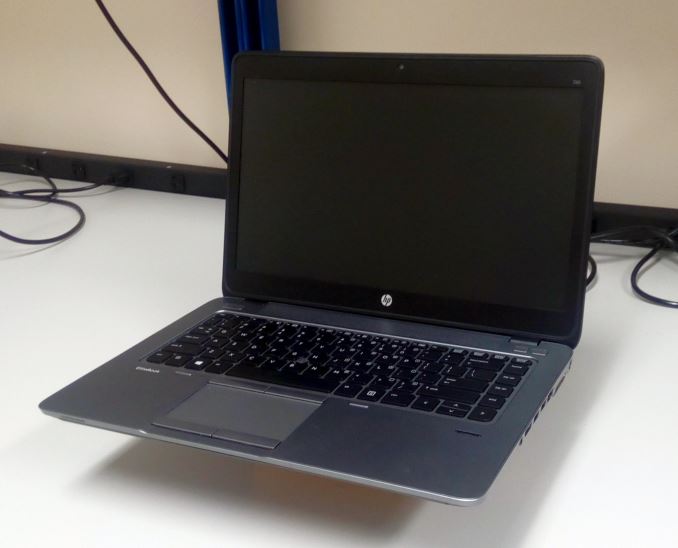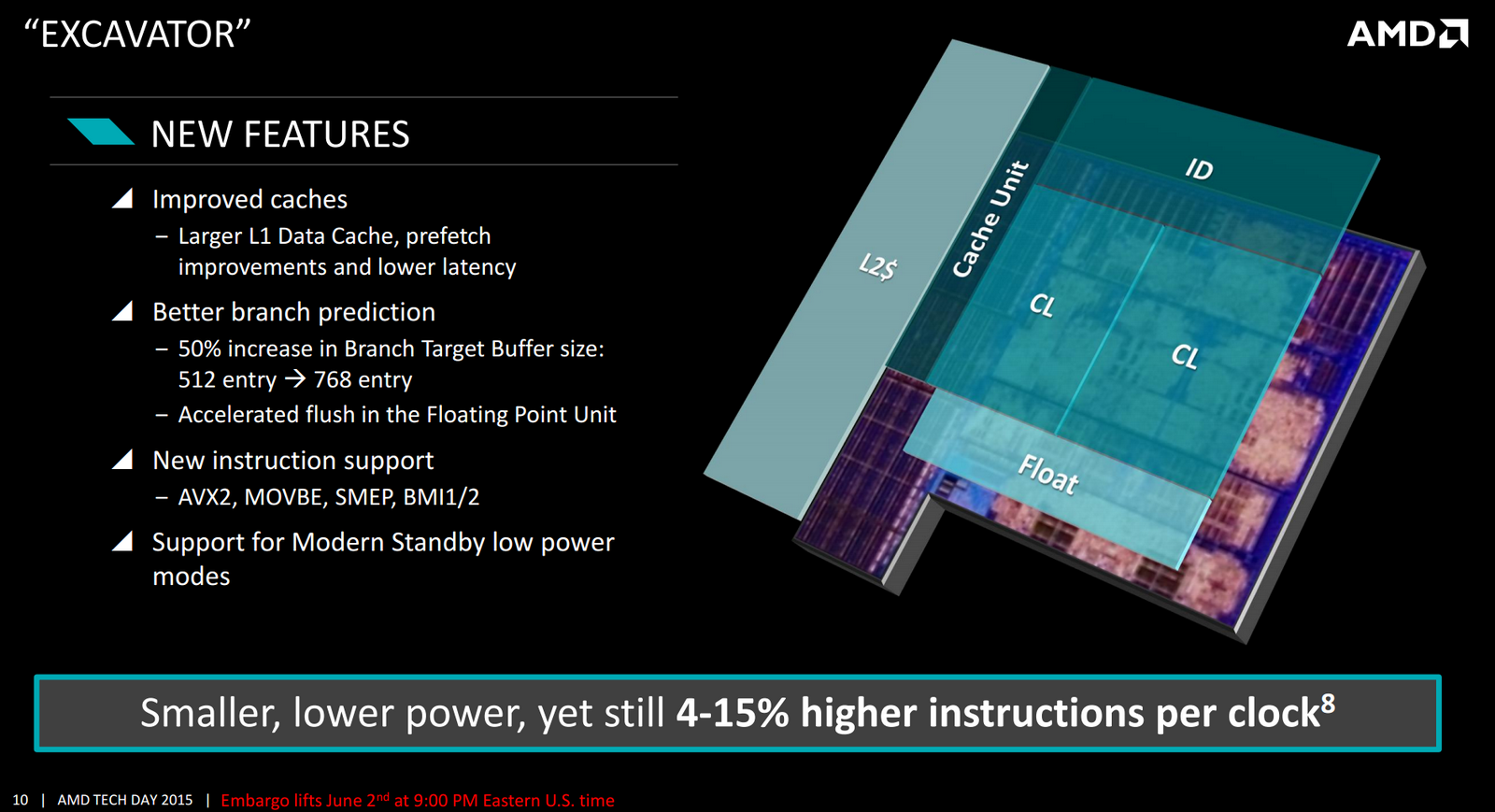Who Controls the User Experience? AMD’s Carrizo Thoroughly Tested
by Ian Cutress on February 4, 2016 8:00 AM ESTNo Room at the Win
The interesting thing about laptop design is that for the most part we are dealing with a number of devices with the same level of power consumption. This means that given sufficient standards, the same laptop shell - be it plastic, aluminium or something a bit more exotic - should be able to house different components that operate at a similar TDP, all with similar battery capacities. Thus if a company gets a ‘win’ with a laptop design, then an equivalent TDP processor from the competition (again, there are other factors involved such as controllers and z-height) should be able to work well in that same device.
But one key differentiator between Intel and AMD however is the consistent level of halo devices available with each manufacturer's hardware. It doesn't take long to find the evolutions of Intel's Ultrabook line that focus on high performance, and other premium devices designed to hit a certain combination of thickness and battery life, such as ASUS' Zenbook line or the Apple Macbook Air. In the tablet space, Intel has had design wins with the Microsoft Surface line as well as others, especially premium devices. These are all high volume, highly advertised product lines available in almost every market and not hard to find. In the case of the three mentioned above, some are household names and all of them are well known in the technical media zeitgeist.

HP Elitebook, one of the more premium designs with AMD inside
However, if AMD is mentioned in a similar vein, it is difficult to draw a single conclusion or the name of a premium or otherwise well-known laptop model from memory unless you happen to either work directly with AMD marketing or you are the product manager at a parner OEM. There have been no design wins or public contracts with AMDs mobile processors, and no big halo products that champion both performance and industrial design in a single device. As a result there has to be an element of questioning here. Are OEMs unwilling to use AMD? Do AMD products have a bad reputation? Is there something inherent with the name or product that makes OEMs reluctant, or users to withhold their purchases? Or is there something fundamentally wrong with the processor? As is often the case, the predicted answer to this question is a mixed bag.
Carrizo over Kaveri
As mentioned previously, Carrizo is the name for the family of APUs that use AMDs fourth iteration of the Bulldozer architecture, Excavator. Carrizo is built on GlobalFoundries' 28nm process node and comes inline with AMDs recent renegotiation of contracts regarding the scale and scope of the APU product line. Carrizo APUs will be available in 15W variants, which reflects the focus of the architecture update as well as the change in metal stack arrangement incorporated for this family to optimize transistor density. Meanwhile the higher-end models will have an available TDP-Up mode of 35W in order to increase performance, although this is at the discretion of the OEM. AMD for their part has already stated that their primary use case for Carrizo is at 15W, as 35W is the point where the Carrizo's power optimizations aren't quite as efficient and the performance of previous generation APUs will intersect with Carrizo (when talking raw CPU, rather than other benefits Carrizo has).
In launching Carrizo, AMD was clear on the target market for this APU - laptops in the $400-$700 range. It has been pointed out by media and analysts that this market segment represents an opportunity for AMD to fit between Intel's low power/high performance/high cost Core-M line of processors, the low power/low performance/low cost Atom line and the higher power/medium cost Core i3. According to AMD, this segment represents 40% of all laptop sales, covering users who want more than a budget device but something below the high costs of a premium device.
Meanwhile AMDs secondary aim with Carrizo is to offer premium level performance in certain applications at a lower price point by using Carrizo's stance as the first CPU architecture to be ratified against the heterogeneous system architecture (HSA) standards. As a result, AMD had been working with software developers in order to leverage HSA benefits in specific code bases and subsequently improve in performance, particularly with software of widespread importance, such as Adobe and LibreOffice.
Carrizo is a true system-on-chip (SoC), integrating the CPU, the GPU, and the input/output hub all on one piece of silicon (and thus one package). This leads to several direct benefits - reducing the power consumption of the I/O hub by bringing it down to the same process node as the main processor, allowing different areas of the SoC to be power gated under a single control system rather than recreating power delivery networks around the system, and ease of use when it comes to HSA requiring less data to travel around external buses.
AMDs main competitor in the mobile processor space, disregarding tablets for the moment and devices like Surface RT/Chromebook Pixel, is Intel. Intel, like AMD, leverages an x86 CPU design with integrated graphics on the same die. Thanks to a combination of many years of experience with graphics and designs intentionally favoring high performance integrated GPUs, AMDs main positive point of performance in recent generations has been the integrated graphics arena, where they win out typically in terms of graphics performance/cost and graphics performance/power metrics. Thus a number of improvements to Carrizo over previous architectures relate to graphics use - either using it more with HSA or offloading certain workloads to dedicated IP to keep more of the SoC at an idle state.
Carrizo’s design allows AMD to add two more graphics compute units (+33%) at 15W compared to Kaveri at a similar frequency, which combined with IPC increases in the processor has led to some interesting claims for performance. These claims have been picked up by casual readers and OEMs alike.











175 Comments
View All Comments
basicmath - Tuesday, February 9, 2016 - link
No it's really not, this laptop came from the factory with dual channel capability but that capability was not utilised because that would have shown the platform in a much better light, he even states that he checked the chips in the G2 to confirm that it was single channel. Upgrading the RAM on a laptop is a simple process that any end user can perform. The only discernible difference between the APU in the G2 & G3 is the number of GPU cores so why did he even bother testing the G3 without using dual channel configuration?Intel999 - Sunday, February 7, 2016 - link
@IanI look forward to that R-series test as it will provide a sneak peek at how much DDR4 relieves the bottleneck on integrated graphics when Bristol Ridge comes out.
That $70 Athlon X4 845 is intriguing as well.
AS118 - Saturday, February 6, 2016 - link
Good article (although to be fair, I mostly skimmed it), and I agree with the conclusions. AMD should try harder to make sure their high-end products are paired with good components. Single-channel ram, bad screens, and slow hard drives with an A10 or mobile FX defeats the purpose of having those higher end APU's.Plus, people will get a bad impression of AMD if a lot of them have poor trackpads, etc. I wish they'd make their own "signature" brand of laptops, and find someone to help make them a thing.
TheinsanegamerN - Thursday, February 11, 2016 - link
Both clevo and MSI have treated AMD well before, Im sure either would love to have exclusive rights to the high end AMD notebook.That being said, I doubt AMD has the intelligence to pull it off. They seem to be run by monkeys 90% of the time.
Cryio - Saturday, February 6, 2016 - link
I'm really sorry for AMD. Kaveri and Carizzo on mobile, when configured to the proper ram, cooling and when using the highest performing part ... would've provided awesome performance, compared to Haswell and Broadwell. But no one bothered.Bristol Ridge will basically be Carizzo with DDR4 support and since it will be even better binned 28 nm CPUs, maybe we'll get even higher frequency out of Excavator. As for GCN 2.0 GPUs ... it will be interesting to see.
I love my Surface Pro 4, even given the disaster that is Skylake drivers and Windows 10 horrible efficiency compared to W8.1. But MAN. I would've loved a proper Carrizo based Surface Pro/Book.
Gadgety - Saturday, February 6, 2016 - link
A confirmation, with in depth detail. Nice write up.Khenglish - Sunday, February 7, 2016 - link
I would have really liked to see some dual channel results, or at least pulling a memory stick from the Kaveri and Intel systems to get a fair comparison. AMD says Zen brings a 40% IPC improvement. It'd be great to have a baseline to see if that 40% improvement is enough. In the dual channel intel to single channel AMD comparisons it does not appear to be enough, but we don't know how big of a factor memory was.Jon Irenicus - Sunday, February 7, 2016 - link
I want to buy an amd part for my next notebook but as was mentioned in the article, oems only choose bargain basement platforms to put the amd inside. The elitebook is the one exception, along with the lenovo if you don't mind the bulk.But the elitebooks are super overpriced for what you get. They need to release an hp spectre version of a notebook with a zen apu, a dell xps notebook variant with an apu. Ideally, the models that include a discreet gpu should allow the apu to work in tandem.
In 2017 dx12 will be in full effect with games, and having two gpus working together by default could give a lot of amd equipped systems a larger edge, especially if the oversized ipc deficits between excavator and intel parts is minimized with zen.
The future really does rest on Zen, amd needs to laser focus on performance per watt and ipc, and equip the 2017 apus with polaris gpu parts or vega or whatever the first iterations will be called. That has to be the minimum. Put those in nice chassis with solid battery life and that is all they need.
Intel999 - Sunday, February 7, 2016 - link
In DX12 dual graphics will be automatic. Even an Intel Igpu combined with a discrete Nvidia or AMD GPU will "merge" the graphic capabilities in the laptop.Theoretically, an AMD APU combined with an AMD GPU might have an advantage as all graphics would be from the same underlying graphic architecture. Time will tell if this bares out.
Ryan Smith - Monday, February 8, 2016 - link
Note that it's only going to be as automatic as the game developer makes it, as devs will be responsible for implementing it. For the moment game devs are going to be the wildcard.